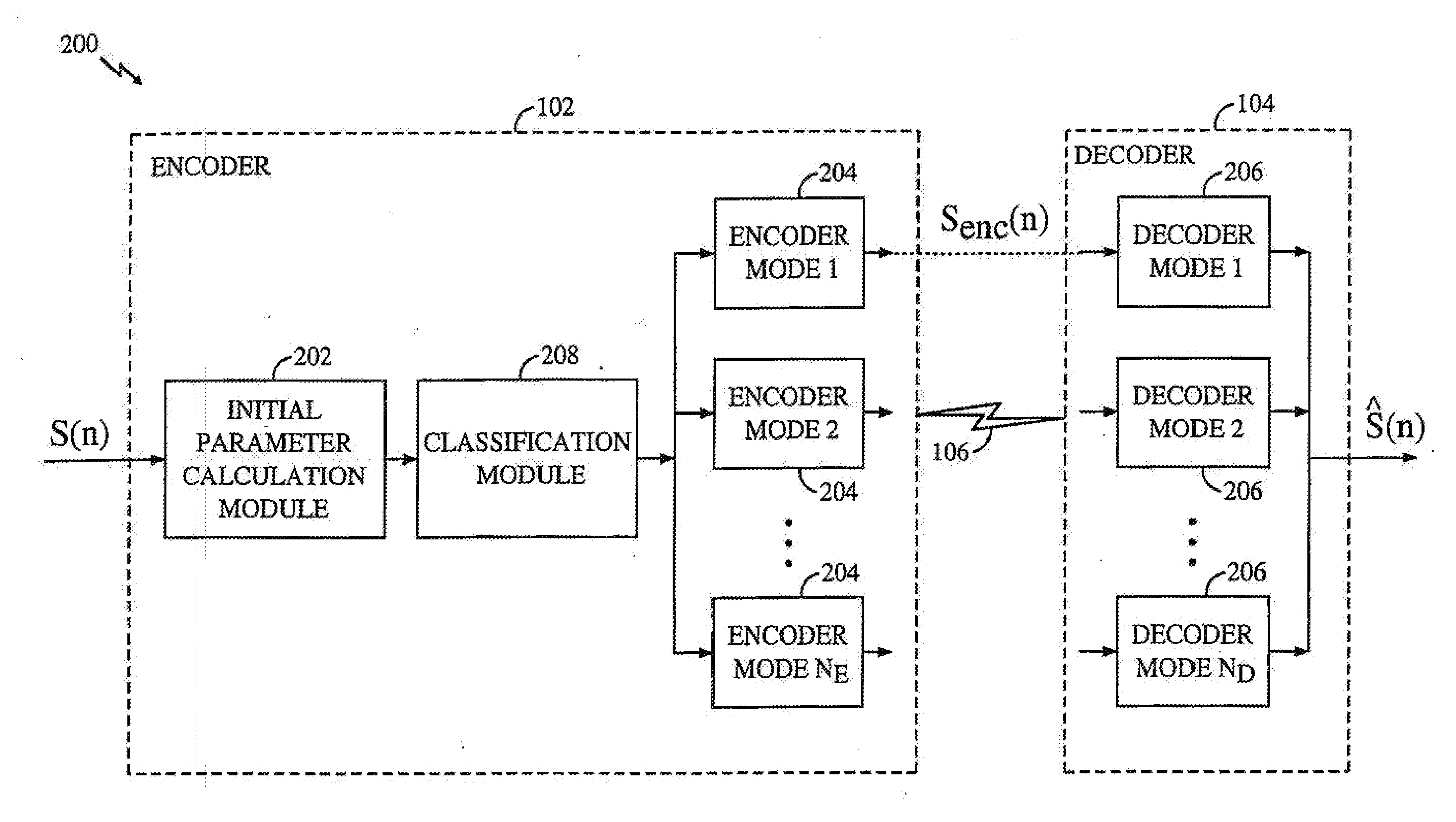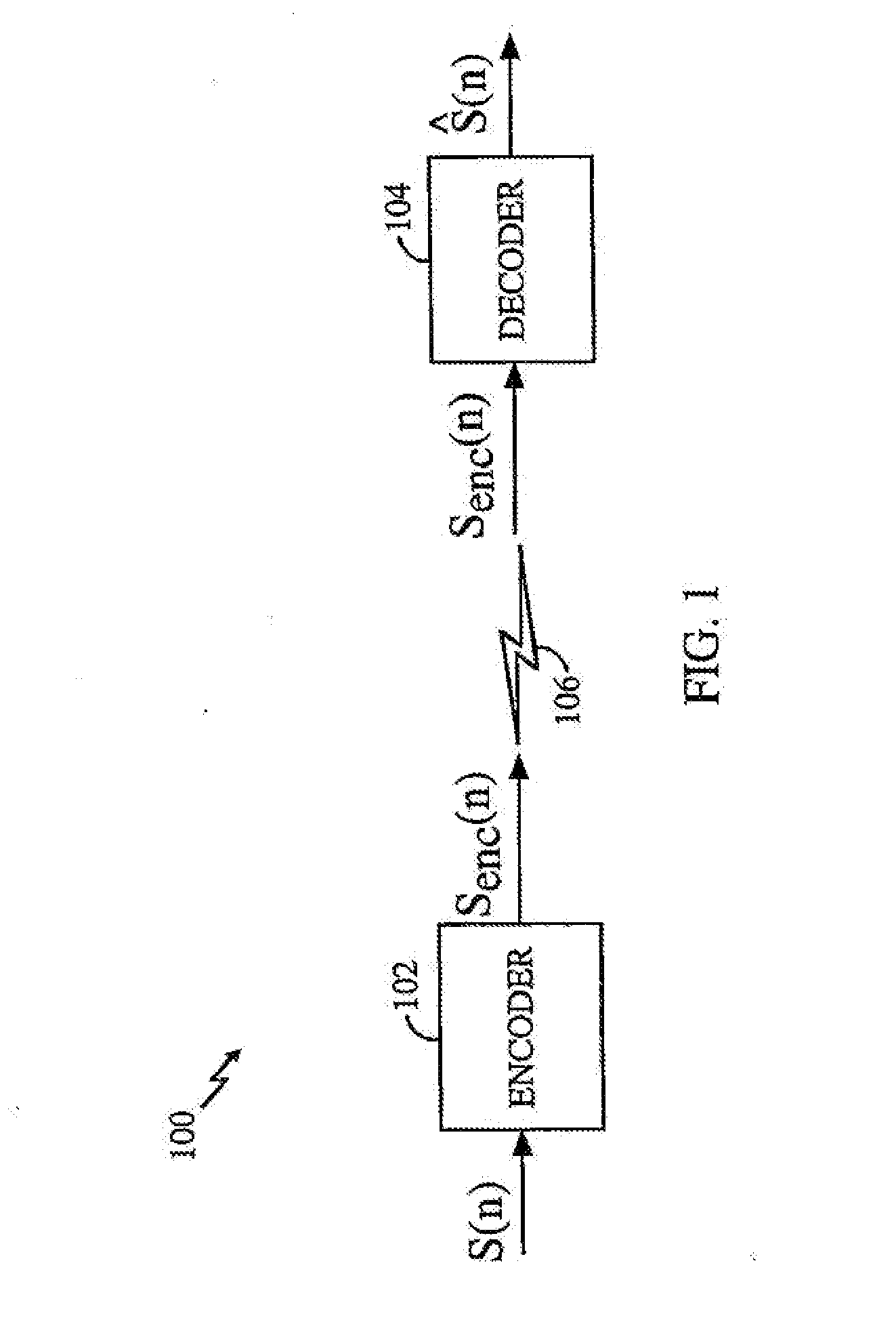Variable rate speech coding
a variable rate and speech technology, applied in the field of variable rate speech coding, can solve the problems of reducing the data rate required for satisfactory speech reproduction, reducing bit rate often exceeding the available bandwidth, etc., and achieves the effects of low bit rate, greater range, and higher capacity
- Summary
- Abstract
- Description
- Claims
- Application Information
AI Technical Summary
Benefits of technology
Problems solved by technology
Method used
Image
Examples
Embodiment Construction
[0046] I. Overview of the Environment [0047] II. Overview of the Invention [0048] III. Initial Parameter Determination [0049] A. Calculation of LPC Coefficients [0050] B. LSI Calculation [0051] C. NACF Calculation [0052] D. Pitch Track and Lag Calculation [0053] E. Calculation of Band Energy and Zero Crossing Rate [0054] F. Calculation of the Formant Residual [0055] I. Active / Inactive Speech Classification [0056] A. Hangover Frames [0057] I. Classification of Active Speech Frames [0058] II. Encoder / Decoder Mode Selection [0059] III. Code Excited Linear Prediction (CELP) Coding Mode [0060] A. Pitch Encoding Module [0061] B. Encoding codebook [0062] C. CELP Decoder [0063] D. Filter Update Module [0064] I. Prototype Pitch Period (PPP) Coding Mode [0065] A. Extraction Module [0066] B. Rotational Correlator [0067] C. Encoding Codebook [0068] D. Filter Update Module [0069] E. PPP Decoder [0070] F. Period Interpolator [0071] I. Noise Excited Linear Prediction (NELP) Coding Mode [0072] II. ...
PUM
 Login to View More
Login to View More Abstract
Description
Claims
Application Information
 Login to View More
Login to View More - R&D
- Intellectual Property
- Life Sciences
- Materials
- Tech Scout
- Unparalleled Data Quality
- Higher Quality Content
- 60% Fewer Hallucinations
Browse by: Latest US Patents, China's latest patents, Technical Efficacy Thesaurus, Application Domain, Technology Topic, Popular Technical Reports.
© 2025 PatSnap. All rights reserved.Legal|Privacy policy|Modern Slavery Act Transparency Statement|Sitemap|About US| Contact US: help@patsnap.com



